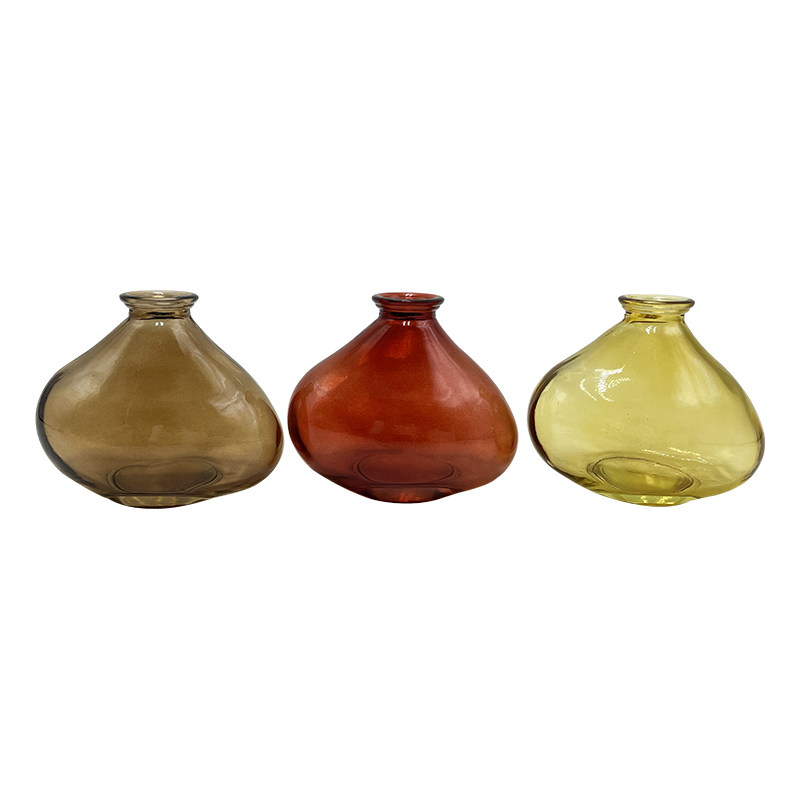What materials are the stain-resistant coating on glass vases composed of?
Fluoride
Fluoride is one of the key ingredients in anti-fouling coatings. They have extremely low surface energy, which makes it difficult for stains and moisture to adhere to the surface of glass vases. Common fluorides include perfluorinated compounds, such as perfluorodecyltrimethoxysilane, heptadecafluorodecyltrimethoxysilane, etc. These fluorides are usually in the form of solutions and mixed with other ingredients to form a uniform coating.
Silane coupling agent
Silane coupling agents play an important role in anti-fouling coatings. They can enhance the bonding between the coating and the glass substrate. One end of the silane coupling agent can form a chemical bond with the hydroxyl (OH-) on the glass surface, while the other end can interact with other components in the coating. This chemical bonding makes the coating more firmly attached to the glass surface, thereby improving the durability and anti-fouling performance of the coating.
Dispersants and wetting agents
Dispersants and wetting agents are auxiliary ingredients in anti-fouling coatings. They help improve the dispersibility and wettability of the coating. Dispersants can prevent the coating materials from agglomerating during the mixing process, ensuring that the coating materials can be evenly and smoothly coated on the glass surface. Wetting agents can reduce the contact angle between the coating materials and the glass surface, making it easier for the coating to spread on the glass surface. The use of these additives can significantly improve the uniformity and quality of the coating.

Solvents
Solvents play a role in dissolving or dispersing coating materials in anti-fouling coatings. Common solvents include organic solvents such as toluene and acetonitrile. These solvents are usually mixed in a certain proportion to ensure that the coating materials can be fully dissolved or dispersed in the solvent to form a uniform coating solution. The choice and amount of solvents used have a great impact on the performance of the coating, so they need to be adjusted according to specific application requirements.
Other auxiliary materials
In addition to the above main ingredients, anti-fouling coatings may also contain other auxiliary materials, such as thickeners, defoamers, etc. Thickeners can increase the viscosity of the coating, making it easier to form a uniform coating on the glass surface. Defoamers can eliminate bubbles generated during the preparation of the coating to ensure the flatness and quality of the coating.
Physical methods and technologies
In addition to the above chemical materials, there are also some physical methods and technologies that can be used to enhance the anti-fouling performance of glass vases. For example, nanotechnology can form an extremely thin nano coating on the glass surface, which has excellent anti-fouling performance and self-cleaning ability. In addition, super-hydrophobic technology is also a commonly used method, which prevents the adhesion of moisture and stains by forming a super-hydrophobic layer on the glass surface.


 English
English Español
Español












